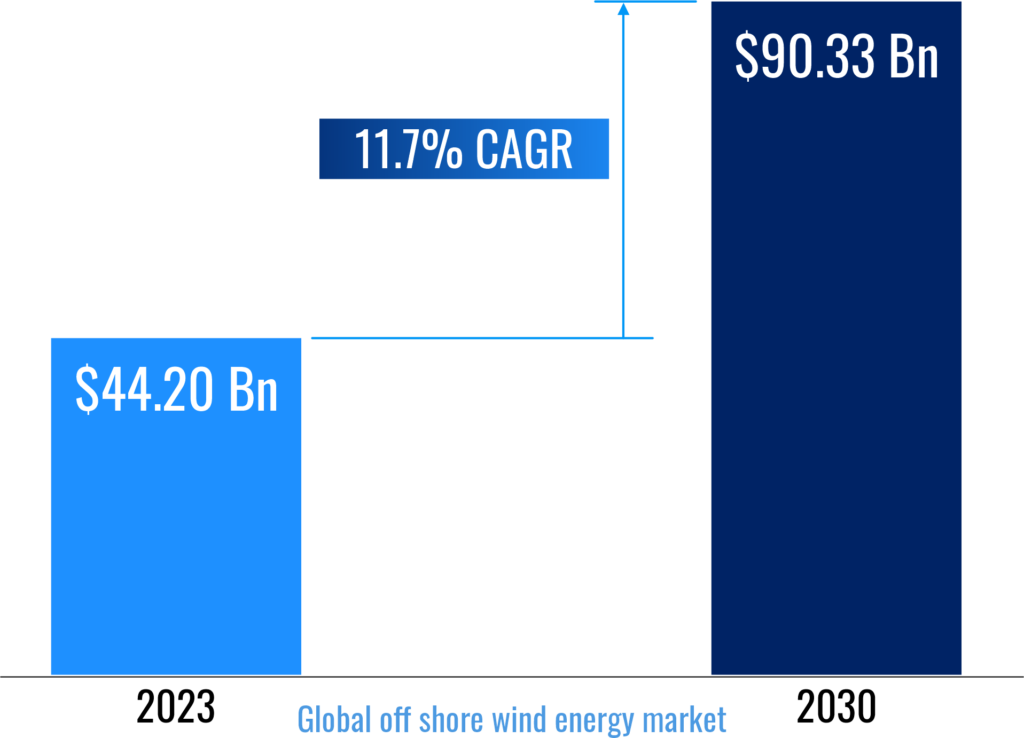In the past, the pursuit of clean and renewable energy appeared to be a distant fantasy. Conventional energy sources like coal and oil were running low and damaging the planet.
Visionaries sought sustainable alternatives, and the powerful winds over the seas emerged as a promising solution. Offshore wind energy offered vast electricity generation without the carbon footprint.
Renewable energy sources like solar and wind provide solutions to the fossil fuel dilemma. Today, wind energy is widely used in many nations to power daily lives, showcasing its potential to create a cleaner, greener future.
Imagine countries such as Denmark, United Kingdom, and the Netherlands harnessing the vast potential of offshore wind to illuminate cities, fuel industries, and drive their economies.
Offshore wind energy offers hope for a sustainable future, meeting growing electricity demands while reducing carbon emissions. However, its widespread adoption faces challenges. As we transition to clean energy, understanding both the current hurdles and future prospects of offshore wind technology is crucial.
Signicent is contributing to this movement by providing cutting-edge technology intelligence solutions, ensuring that the implementation of offshore wind energy is both efficient and effective.
Challenges:
Nowadays, reducing carbon footprints is a major challenge faced by many countries. Developing and maintaining advanced wind turbines that can withstand harsh marine environments, including high winds, saltwater corrosion, and extreme weather conditions, presents significant obstacles.
- As offshore wind farms venture into deeper waters and utilize larger turbines, foundation designs have evolved to address manufacturing challenges.
- Integrating offshore wind energy into the existing power grid involves significant infrastructure upgrades and management of power transmission over long distances.
- Efficiently transporting and installing massive wind turbines in remote offshore locations requires specialized ships, cranes, and coordination.
Offshore wind farms face a unique set of challenges due to their harsh marine environment. These challenges include:
- Corrosion: Marine environments cause significant metal degradation, requiring robust anti-corrosion measures and maintenance.
- Fatigue: Constant wind and wave action lead to material fatigue, necessitating durable designs and regular inspections.
- Erosion: Particles in seawater erode turbine blades and foundations, demanding erosion-resistant materials and coatings.
- Lightning Strikes: Offshore turbines are susceptible to lightning, needing effective lightning protection systems to prevent damage.
- Biofouling: Marine organisms accumulate on structures, increasing drag and maintenance needs, requiring anti-fouling technologies.
Addressing these challenges and maintaining the operational availability of offshore wind turbines will become increasingly important as the reliance on offshore wind energy grows.
Each year Signicent provides consultancy to hundreds of organizations to help transform their innovations to value.
New age Innovations:
- Corrosion-resistant materials are used such as specialized alloys and composite coatings like fiberglass, carbon fiber-reinforced polymer (CFRP), and glass-reinforced epoxy (GRE) and implement cathodic protection systems to safeguard metal components.
- Developing fatigue-resistant materials and employing structural health monitoring systems using sensors to detect early signs of wear and fatigue.
- Erosion-resistant coatings like ceramic and polymer-based coatings are applied to turbine blades and foundations and advanced composite materials are used that can withstand abrasive forces.
- Comprehensive lightning protection systems are installed, including conductive paths and grounding systems, to safely dissipate electrical charges.
- Anti-fouling coatings like silicone-based and copper-based paints have started gaining popularity. These coatings prevent marine growth and integrate ultrasonic anti-fouling systems to deter organism accumulation.
- High-voltage direct current (HVDC) transmission systems are implemented for efficient long-distance power transport. Existing grid infrastructure need to be upgraded to handle increased capacity and incorporate smart grid technologies.
Signicent is pro-actively engaging in technology gap analysis and finding the new opportunities through ongoing research and development efforts.
Through innovation and collaboration, these solutions can enhance the efficiency and sustainability of offshore wind energy.
Market Research:
As per Signicent’s Market Researchers, the global market for offshore wind energy market is likely to reach values in the ranges shown below.

Key Players:
According to Signicent’s Market Intelligence, some of the leading key players in the offshore wind energy industry include:
About Signicent LLP
We assist businesses globally in their technology innovations, R&D, new product development, patents, valuation, product commercialization & market research needs.
Services Offered:
- Technology Intelligence
- Market Research
- Patent Landscape
- Technology gap analysis
- Design Patent Search
- Portfolio Analysis
- Freedom to operate
- Bio Sequence Search
- Innovation pipeline identification
- Chemical Structure Search
- Patent Invalidity Search
- Manufacturers Search/ Supplier search
- Patent Licensing Services
Elevate your Innovation and Research with Signicent’s cutting edge approach to assist you with Technology and Market related matters alongside the IP aspect of the analysis.


